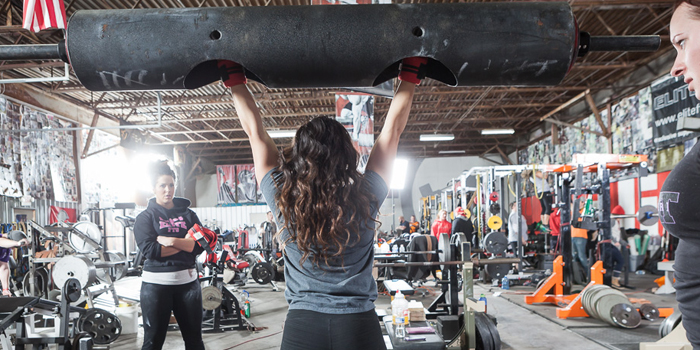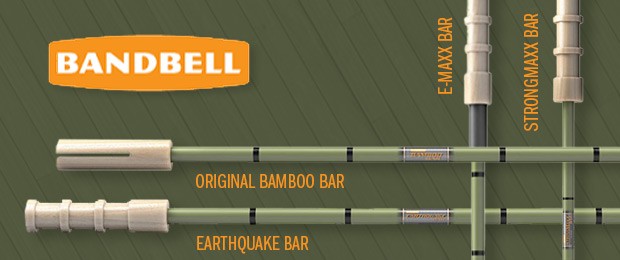
I used to hate strict pressing when I competed in powerlifting years ago. I hated it, of course, because I sucked at it. All I would do for overhead was seated dumbbell presses. At a young age, I just wanted to do what I was good at, which was bench pressing. However, you cannot just add in more bench volume and expect to keep getting stronger. You need to work on your weak points—exactly what accessory lifts are for.
I could have avoided a lot of injuries when I was younger if I had learned to work on my weaknesses sooner. From a symmetry perspective, I had a very large chest; however, my shoulders and triceps were lacking. In my opinion, this is what caused all of my pec tears (aside from technique issues). My chest was overdeveloped, and in turn, it would take the majority of the weight since my shoulders were too weak to do their job. Fast forward, I started competing in strongman. I still sucked at pressing, but I was very good at using my legs from an Olympic lifting background in college. I was able to do well at pressing events because of this skill, but my press wasn't progressing as I had hoped. It was time for me to start working on my strict press.
I remember weighing 240 pounds at the time and wanted to see what my max would be. Hoping I could at least press my bodyweight, I worked up in weight and got completely stapled at my bodyweight. This was a huge wake-up call for me. I think we all have these moments in our training when we try something new, expecting it not to be that hard, and completely suck. It's a good thing. When this happens, you have a glaring weak point that you need to bring up, so it's time to get to work.
RECENT: 8-Week Beginner Post Quarantine Strongman Program
For all my strongman clients, we have a day where we focus on the event. Let's say log press is what's coming up in a competition. A secondary pressing day will be much like a bodybuilding day where we work on that variation for a strict press. I generally like to keep the repetitions high, as on the event day there will be some heavy reps performed. Remember, two heavy pressing days in a week are going to be detrimental to your recovery and your joints.
Having a strong strict press will do a couple of things for your strongman press. One, you will be able to press out more weight if your form slips or when your legs get tired. When pressing for reps, you need to use your legs efficiently to get the most amount of reps possible. Whether you split jerk or push press, use your legs to the best of your ability. This is usually the case with the split jerker, as this is also my best pressing technique. The split jerk is very technical and takes perfect timing to perform. The downside of it is you get gassed out rather quickly. Generally, what we see is the athlete jump, getting the implement above their head only to get stuck and not have the lockout strength to finish. This is where having a strong strict press comes in. I can easily attribute my increase in the log press going from 330 pounds to 370 pounds to my strict press going up. I always track my training, and I could see as my strict press increased, so did my strongman press. The American log press record holder Rob Kearney also used to avoid strict pressing as he was able to rely on his massive split jerk to get him over 400 pounds on the log. Once he incorporated strict pressing, as well as other accessory lifts to build his shoulders, he just recently pressed 475 pounds for a new American record.
When you perform the strict press, here are a few important technique cues that can help:
- You have to keep your glutes and quads contracted as hard as possible. Staying tight becomes even more important during the strict log press. It's very easy to overarch, injuring your back while pressing a 10- or 12-inch diameter log.
- Engage your lats. Like so many other lifts, engaged lats will not only protect your shoulders, but they will increase the amount of weight you can lift. The same way you would tighten your lats on the bench, you want to on the strict press, especially on the eccentric.
- Get your head through as soon as the bar/implement passes your face. You want to lockout in a perfectly straight line from where the bar is in your hands, wrist, elbow, and shoulder. When a press is out in front, it makes the lift much more difficult, as well as stresses the joints more than they need to be. You are always stronger moving the bar in a straight line when it comes to overhead.
- Ground your feet. I know this may sound silly, but I have gotten off-balance during a lot of strict pressing because I wasn't focusing on this. This is a great cue I got from Andrew Triana. I think about my weight evenly distributed throughout my feet, and my toes gripping the floor.
- Get your breathing and bracing right. First, I like to always wear a belt when I get up to a certain weight. Leaning back too much can cause back issues, and with a belt to push out against, you will be able to perform the lift much safer. I like to begin by taking in as much air as I can, pushing out against my belt all around (not just in front). Unrack the bar and go right into the press right away. Here's the important part: I notice a lot of beginners take their breath at the bottom—where it's tough to get air. When you lockout, let your air out, then inhale and brace again. You can take a lot more air in with the weight over your head than you can when it's back on your shoulders.










